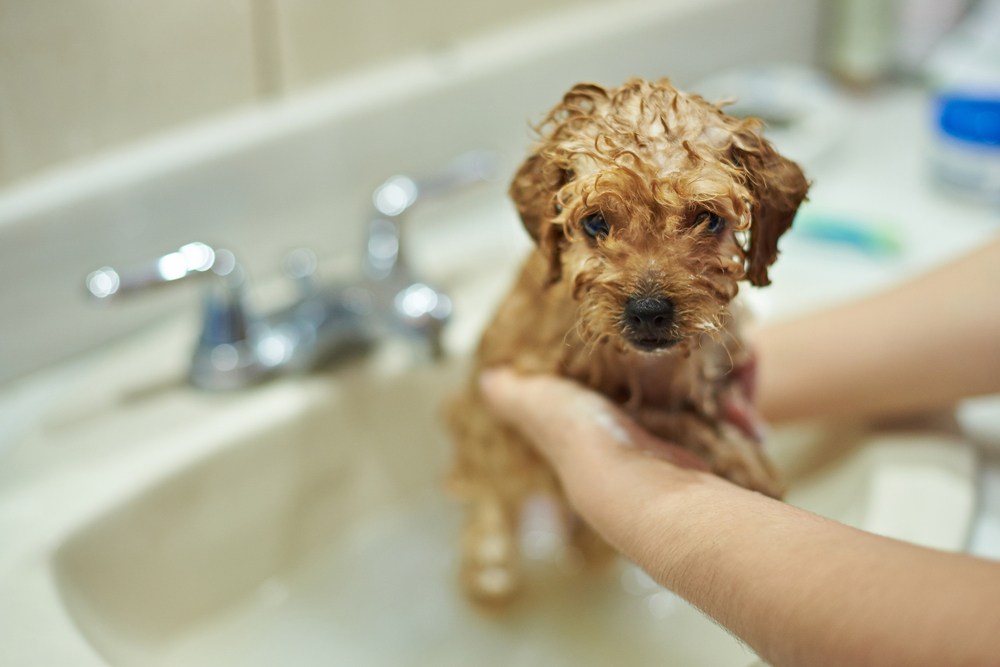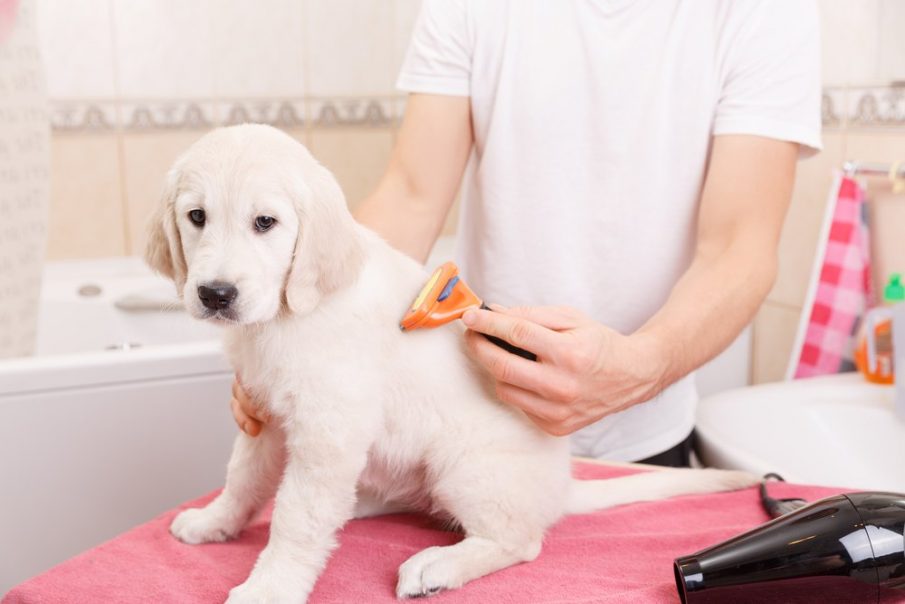This last year has seen us going through some strange times, and with many people deciding that with being home for a lot of the time that they would get a puppy, and we have this whole new explosion of puppies stuck at home with owners. They probably did not think of grooming their puppy when they first got them.
Now we know how important it is to help set your pup on the right road to growing into a confident, sociable, loyal companion but as lockdown has limited their exposure to physical puppy classes it is even more important that owners are helping them at home.
And from a groomer’s point of view, any groundwork that can be done with a puppy helps immensely.
Dog Grooming Examples
I’ve got a couple of little stories for you to illustrate what I mean.
Dog A, I’ll call him Freddie. The owners brought him in for a groom, he’s 8 months old, he has been at home with mom mainly, so when he came in and had to leave his owners he was understandably worried. But he had a sniff and explore before we had a bath, and settled when it came to the drying he really was not happy and was very vocal about it. The rest of the groom went really well, coping with the clippers and scissors apart from his front legs.
Dog B, I’ll call Max. Little bundle of fluff. His first groom again around 8months old, unfortunately for Max he was very knotty so he had to go really short which wasn’t a very pleasant experience for him, and although clipping to remove the knots is the kindest thing, because he was small and it was his first experience of being groomed he was very unsure and vocal about being unsure. Luckily all was forgiven when it was all over and kisses ensued.
Dog C, let’s call him Alfie – now Alfie is no longer a puppy but a full-grown dog, around 5years old and when I mean full-grown, I mean he is a big boy over 10st. And he was a challenge he probably only gets bathed once a year at a groomer (which is fine), however, Alfie is petrified of the shower, lowing the pressure helped, and gets really stressed with the drier so towels only and being such a big boy he takes a minimum of two people. So he would be no good going to a lone groomer.
So with Freddie, suffering from separation anxiety, as well as not being acclimatised to the grooming process enough, so when the owners collected we talked through a few simple things they could do to help him at home.
Max, is in charge. I get the feeling that if he ‘says’ he’s had enough she gives into him and that’s not really helping him, we need to remember that although we may think they are our ‘babies’ they are dogs and need us to be in charge and give them leadership.
Alfie would have benefited also from coming into the groomers from a young age, to give him confidence and to show him that its not super scary and no one is going to try and hurt him. Which I think he assumes is going to happen.
So you can see from these three pretty basic examples that its not all about making your precious pup look gorgeous (although we try) there is some hard work behind it, and anything you can do at home helps your groomer, and your vet when they have to go there.
 Most groomers should happily see puppies when they are able to be out and about, usually, two weeks after their second injection, some will offer some sort of puppy package or puppy intro so they can get used to the grooming environment and the experience.
Most groomers should happily see puppies when they are able to be out and about, usually, two weeks after their second injection, some will offer some sort of puppy package or puppy intro so they can get used to the grooming environment and the experience.
Think about when you were young – you didn’t go straight to college or university, you started at playgroup or primary school and worked your way up so why would you expect your dog to start at the end? With a full groom without knowing what to expect, you’re setting them up to fail.
Any breed is welcome for grooming for puppy intros, it’s not just the fluffy dogs that come to the groomers if at some point in the future you would like your pet to have their nails clipped or just have a bath start them young. By starting them early you are helping them to experience more things and be more attuned to the experience
Tips For Grooming Your Puppy
If you are struggling with the brushing, or the puppy is biting the brush/comb. Stop and reassess. Try putting the puppy on a table, they can be unsure of heights, so are more concerned with this than the procedure (making sure they’re safe and do not leave unattended). Have a few treats with you, try brushing again, when the puppy is accepting the brush and you can get a stroke down the leg reward, repeat when they learn that it’s not bad you can reduce the number of treats and just reward every few strokes and give verbal praise. Keep the sessions short but try and do them frequently.
Holding and touching different parts of their body, especially legs and feet, making sure you touch their paws and nails, Start when they are relaxed, start with a few minutes at a time and then stop, the idea is to get them used to the sensation not to get stressed about it.
Resting their head in your hand so they get used to someone handling their face. Handling their mouth and ears. Your vet will thank you if your dog is easy to handle.
Have a battery-powered toothbrush and run it over your puppy, legs, feet and paws as well as the head so they get used to the vibration.
Have the dog in the room with you, while you are using a hairdryer (don’t force them to stay) but it helps to get them used to the noise.
Allison Pearson runs dog grooming service Allison and your best friend and can be found on Facebook






